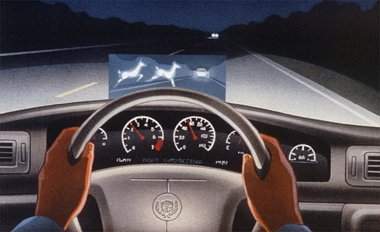A Single-Photon, Time-Resolved Image Sensor for Low-Light-Level Vision (L3SPAD)
Research
Photon counting is one of the leading fields of research in image sensing technology. The appearance of monolithic solid-state complementary metal-oxide-semiconductor (CMOS) processes for the design and fabrication of photon counting image sensors has paved the way to imaging sensors optimized for advanced biomedical imaging modalities. Most notably, photon-counting imagers for MRI-compatible positron emission tomography (PET/MRI) have recently emerged, explicitly enabled by solid-state fabrication processes.Another important class of devices, known as low-light-level (LLL) image sensors, could greatly benefit from CMOS photon-counting imagers for applications ranging from fluorescence microscopy to automotive sensing, from safety monitoring to 3D vision for robots, to name a few. Traditionally, LLL or L3 image sensors make use of intensified charge-coupled device (ICCD) based cameras that are relegated to military use due to the technology�s prohibitive costs.
With this project, we push the limits of CMOS photon-counting imagers to a new frontier, enabling low cost, high performance LLL vision for the first time. In order to achieve this goal, we will realize a gated 1.3Mpixel photon-counting image sensor in a standard CMOS process enabling low noise and high photon detection probability (PDP). The target frame rate will be 100fps, the minimum gate 4ns, with 100ps of rise and fall times (FWHM) and a spread of less than 200ps. Each pixel will have a counter of at least 1 bit and possibly 2 non-overlapping counters. The minimum PDP for each pixel should be 45% in the wavelength range of 450-550nm and 15% in the range of 350-900nm, while the fill factor will be at least 50%. The dark count rate should be less than 0.05Hz/μm2 at nominal excess bias.
Unlike traditional CCDs, this device will be digital in nature, thanks to the direct conversion of photons to digital pulses. To enable high frame rates at full resolution, we will develop a fast readout circuitry capable of supporting data rates of 3Gbit-per-second (Gbps) with a contained power dissipation of less than 1W.
Application perspective
It is well known that the rate of car accidents at night is 4 times higher than during the day, due to limited visibility. In an effort to improve safety in our cars and in our streets, it is essential to improve the sensing capabilities on board and between vehicles. More and more automakers are introducing sensor-based security systems to help drivers avoid obstacles and to reduce potentially dangerous situations. Advanced driver assistance systems (ADAS) are a collection of mechanisms to achieve this goal while maintaining driver control of the vehicle. One of the core technologies in ADAS is represented by cameras. The specifications of automotive cameras are more strict than those of consumer cameras, as they require higher sensitivity to operate in LLL conditions and higher dynamic range to ensure high contrast in diverse illumination conditions. In addition, increasingly complex cars and the emerging requirements of autonomous driving require the presence on board of multiple cameras, with the highest reliability and compactness, and the lowest cost.Large format, CMOS photon-counting image sensors with high timing resolution and high photon detection efficiency are the perfect candidate to meet all these technical and cost specifications. Gating techniques will ensure, in addition to simple active illumination, high dynamic range over long distances, so as to enable the detection of obstacles, including pedestrians, at few meters and up to 200 meters.
As a second, but not lesser important application, the availability of ADAS-enabled LLL cameras will be indicated for robotics applications, where obstacle avoidance and human safety in fully-automated package and merchandise handling facilities are critical. Thanks to time-correlated single-photon counting, it will be possible to give robots a 3D reconstructed view of their surroundings, thereby ensuring accurate decisions in the interest of human safety.

Project data
| Researchers: | Edoardo Charbon, Myung-Jae Lee |
|---|---|
| Starting date: | June 2015 |
| Closing date: | June 2019 |
| Funding: | 500 kE; related to group 500 kE |
| Sponsor: | STW HTSM |
| Partners: | Photonis Technologies |
| Users: | Fastree3D, TNO, Netherlands Cancer Institute |
| Contact: | Edoardo Charbon |